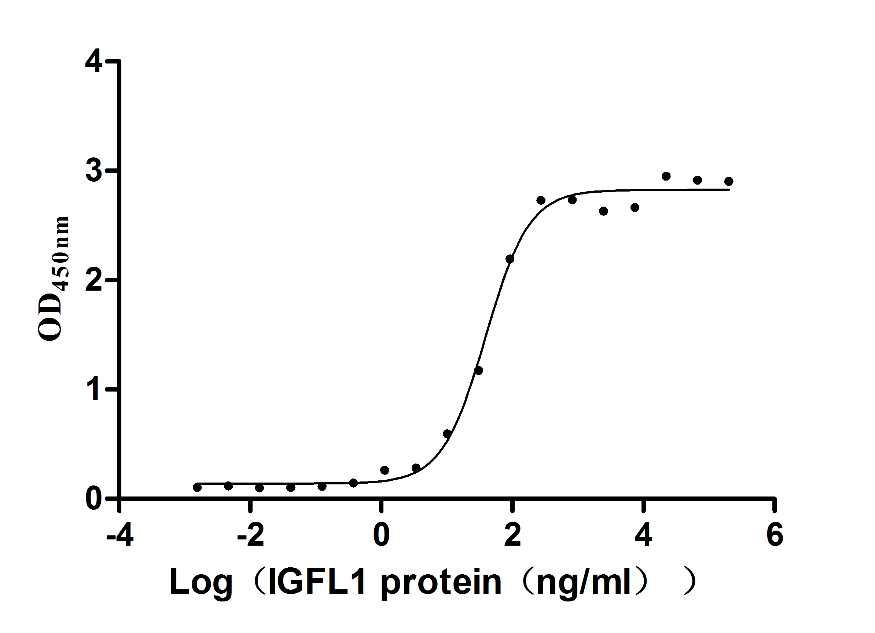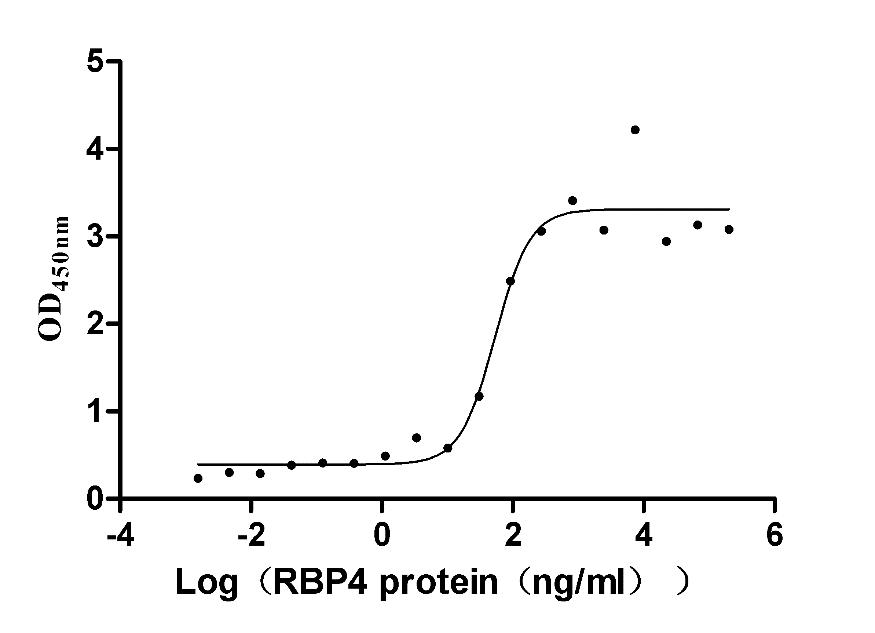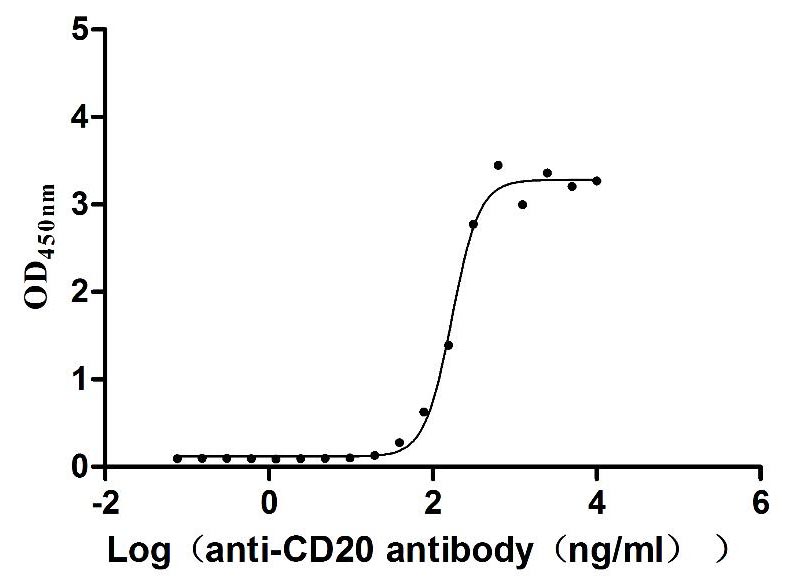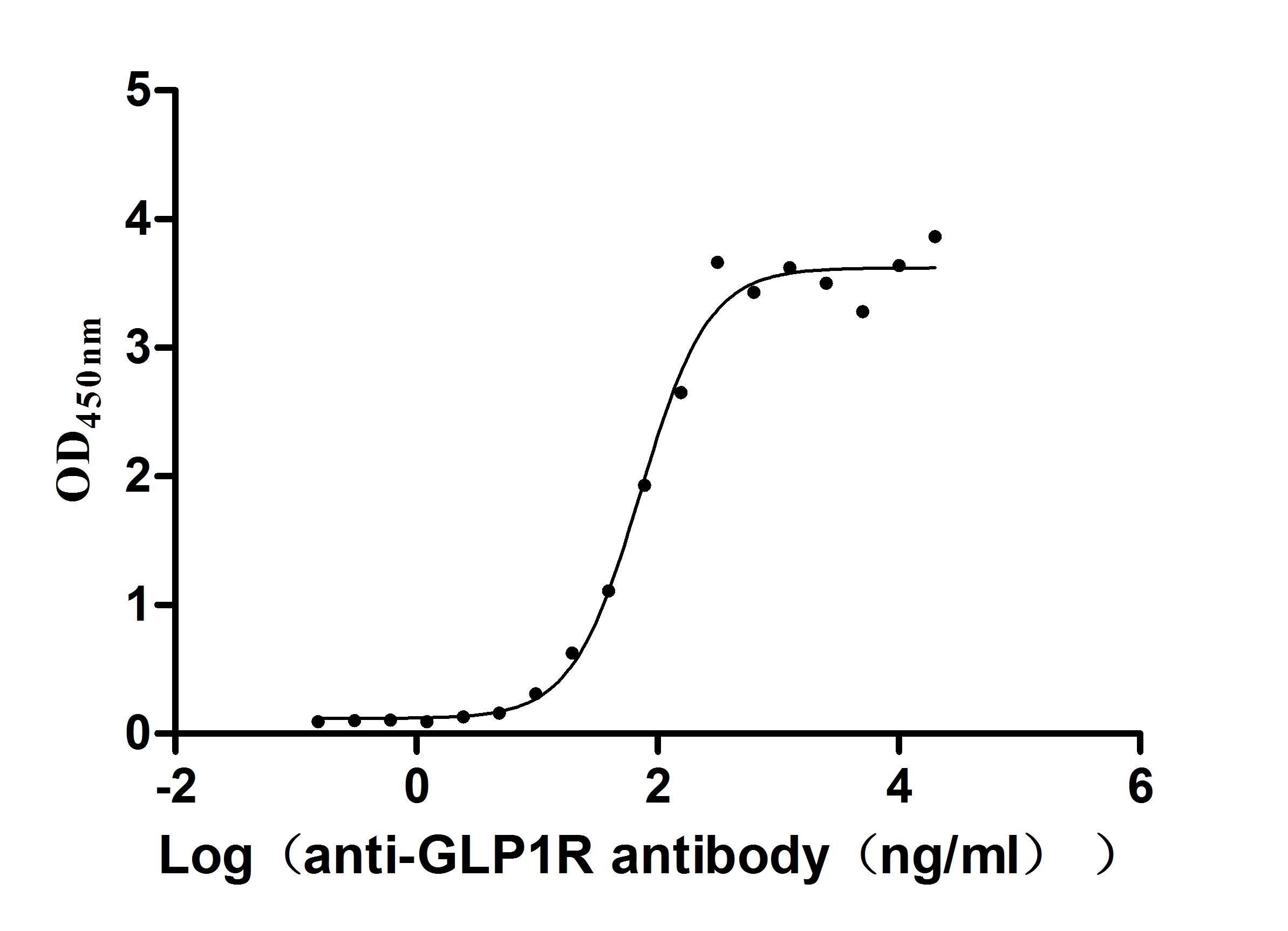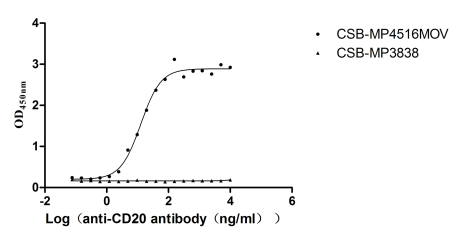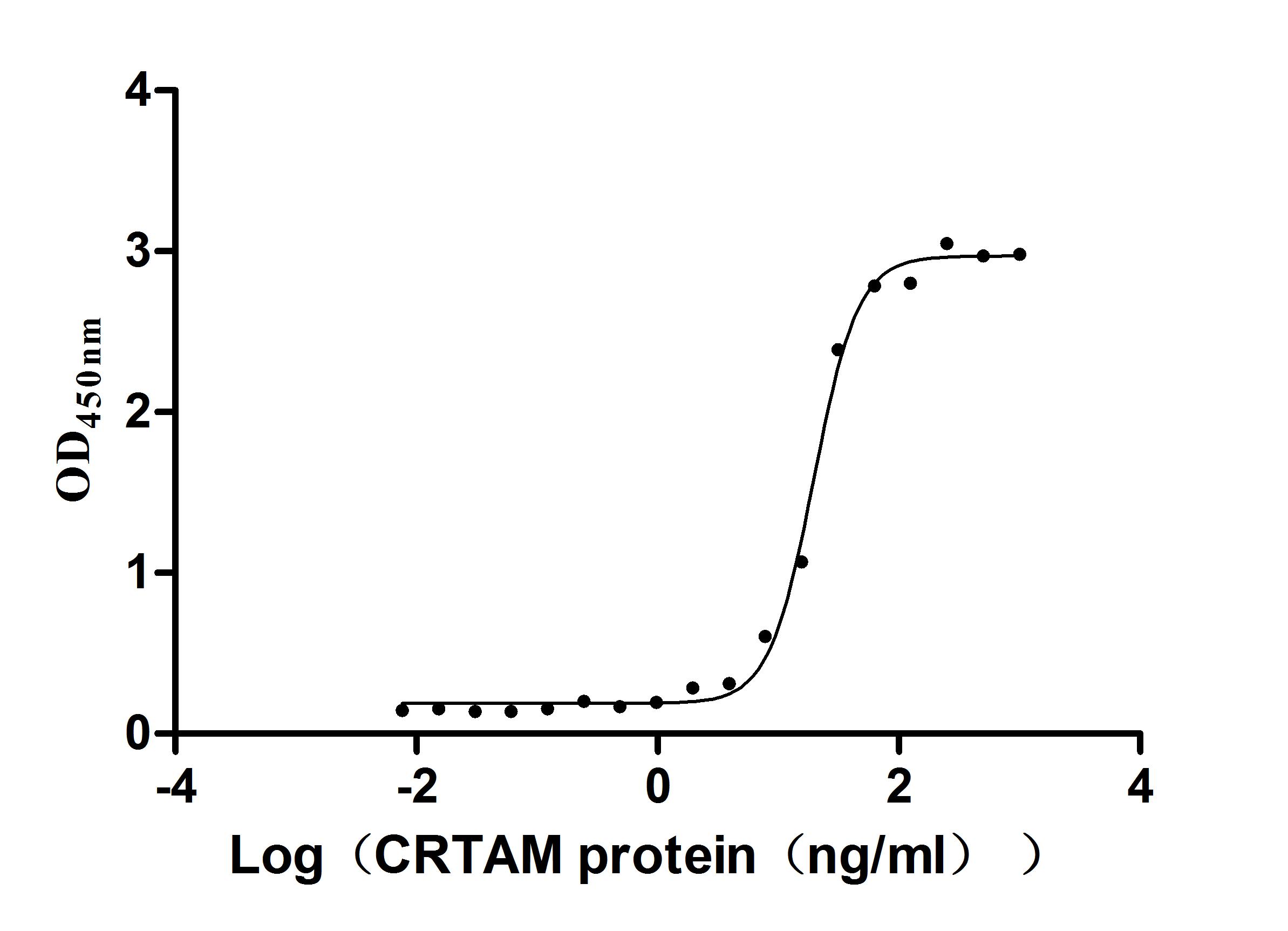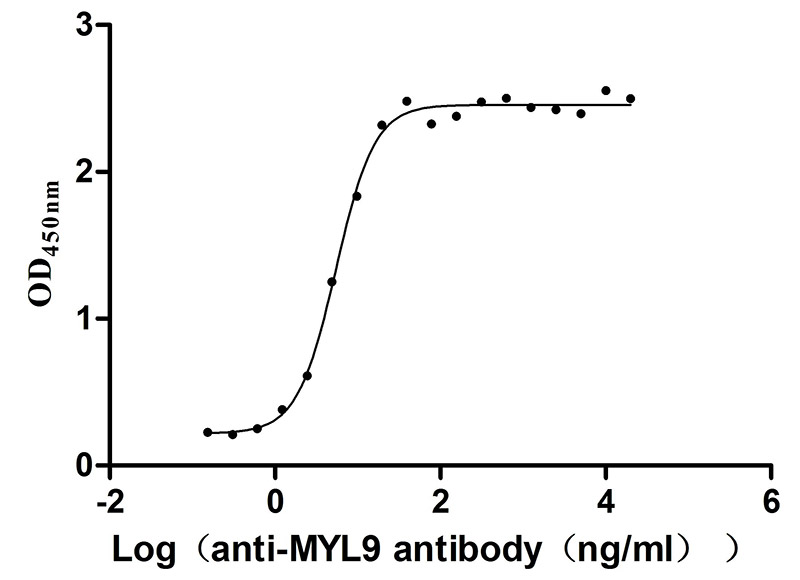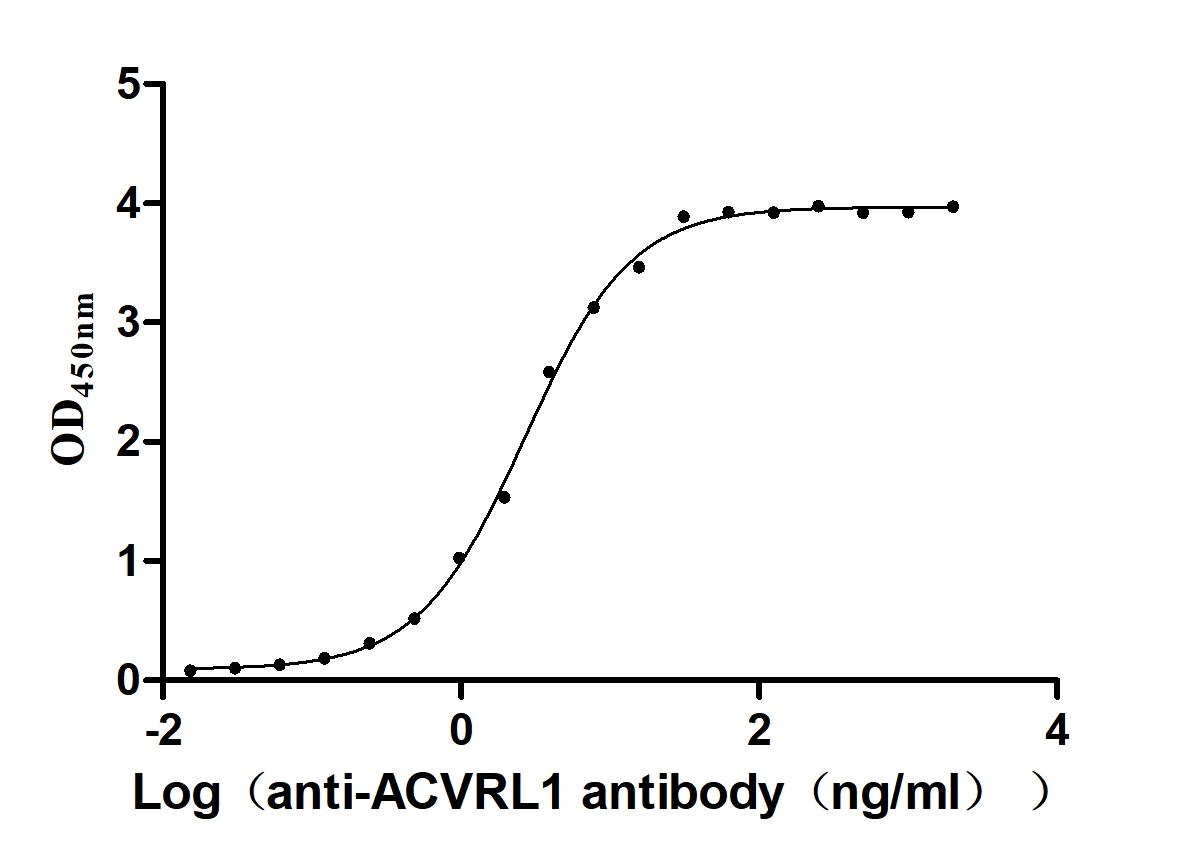Recombinant Mouse Potassium/sodium hyperpolarization-activated cyclic nucleotide-gated channel 2 (Hcn2), partial
-
中文名称:小鼠Hcn2重组蛋白
-
货号:CSB-YP010217MO
-
规格:
-
来源:Yeast
-
其他:
-
中文名称:小鼠Hcn2重组蛋白
-
货号:CSB-EP010217MO
-
规格:
-
来源:E.coli
-
其他:
-
中文名称:小鼠Hcn2重组蛋白
-
货号:CSB-EP010217MO-B
-
规格:
-
来源:E.coli
-
共轭:Avi-tag Biotinylated
E. coli biotin ligase (BirA) is highly specific in covalently attaching biotin to the 15 amino acid AviTag peptide. This recombinant protein was biotinylated in vivo by AviTag-BirA technology, which method is BriA catalyzes amide linkage between the biotin and the specific lysine of the AviTag.
-
其他:
-
中文名称:小鼠Hcn2重组蛋白
-
货号:CSB-BP010217MO
-
规格:
-
来源:Baculovirus
-
其他:
-
中文名称:小鼠Hcn2重组蛋白
-
货号:CSB-MP010217MO
-
规格:
-
来源:Mammalian cell
-
其他:
产品详情
-
纯度:>85% (SDS-PAGE)
-
基因名:
-
Uniprot No.:
-
别名:Hcn2; Bcng2; Hac1Potassium/sodium hyperpolarization-activated cyclic nucleotide-gated channel 2; Brain cyclic nucleotide-gated channel 2; BCNG-2; Hyperpolarization-activated cation channel 1; HAC-1
-
种属:Mus musculus (Mouse)
-
蛋白长度:Partial
-
蛋白标签:Tag type will be determined during the manufacturing process.
The tag type will be determined during production process. If you have specified tag type, please tell us and we will develop the specified tag preferentially. -
产品提供形式:Lyophilized powder
Note: We will preferentially ship the format that we have in stock, however, if you have any special requirement for the format, please remark your requirement when placing the order, we will prepare according to your demand. -
复溶:We recommend that this vial be briefly centrifuged prior to opening to bring the contents to the bottom. Please reconstitute protein in deionized sterile water to a concentration of 0.1-1.0 mg/mL.We recommend to add 5-50% of glycerol (final concentration) and aliquot for long-term storage at -20℃/-80℃. Our default final concentration of glycerol is 50%. Customers could use it as reference.
-
储存条件:Store at -20°C/-80°C upon receipt, aliquoting is necessary for mutiple use. Avoid repeated freeze-thaw cycles.
-
保质期:The shelf life is related to many factors, storage state, buffer ingredients, storage temperature and the stability of the protein itself.
Generally, the shelf life of liquid form is 6 months at -20°C/-80°C. The shelf life of lyophilized form is 12 months at -20°C/-80°C. -
货期:Delivery time may differ from different purchasing way or location, please kindly consult your local distributors for specific delivery time.Note: All of our proteins are default shipped with normal blue ice packs, if you request to ship with dry ice, please communicate with us in advance and extra fees will be charged.
-
注意事项:Repeated freezing and thawing is not recommended. Store working aliquots at 4°C for up to one week.
-
Datasheet :Please contact us to get it.
靶点详情
-
功能:Hyperpolarization-activated ion channel exhibiting weak selectivity for potassium over sodium ions. Contributes to the native pacemaker currents in heart (If) and in neurons (Ih). Can also transport ammonium in the distal nephron. Produces a large instantaneous current.
-
基因功能参考文献:
- rescues nicotine-exposed Xenopus embryos, restoring the endogenous bioelectric prepatterns necessary for brain patterning, resulting in normal brain morphology PMID: 29519998
- Together, these results reveal a critical role for HCN2 in regulating ventral tegmental area dopamine neuronal activity and depressive-related behaviors. PMID: 29256865
- the increased intracellular cAMP drives diabetes-associated pain by facilitating HCN2 activation and consequently promoting repetitive firing in primary nociceptive nerve fibers. PMID: 28954930
- The data of this study strongly suggest that cAMP acts by PKA-mediated regulation of HCN2 channel activity and thereby generates nociceptive sensitization. PMID: 28767511
- loss via insertion mutation leads to delayed gastrointestinal motility and reduced energy intake PMID: 29466436
- Data support a model in which the degree of facilitation of opening in the full-length HCN2 channel by a given ligand depends upon its ability to promote oligomerization of the C-linker/cyclic nucleotide-binding domain in solution. PMID: 27568927
- Mouse HCN2-expressing human mesenchymal stem cells are relevant biological models for the generation of biological pacemakers. PMID: 27137910
- the allosteric mechanism of different cyclic nucleotides on the cyclic nucleotide-binding domain of HCN2 and on channel gating, was investigated. PMID: 26559974
- HCN2 channel activity reduces the repolarization reserve of the ventricular action potential and increases ectopic automaticity under pathological conditions such as excessive beta-adrenergic stimulation. PMID: 25562801
- fisetin is a partial agonist for HCN2 channels. PMID: 24085296
- HCN2 channel expression increases significantly during pregnancy, accelerating the heart rate. PMID: 23609807
- cAMP-dependent changes in the structure of the C-helix of a C-terminal fragment of HCN2 channels PMID: 23525108
- cGKII and HCN2 interact and colocalize with each other PMID: 21347269
- HCN2 shows only a confined expression to individual pacemaker cells. PMID: 21945247
- findings show neuropathic pain is initiated by HCN2-driven action potential firing in Na(V)1.8-expressing nociceptors PMID: 21903816
- new insights into the cAMP-dependent gating in HCN channel and the interpretation of protein allostery for general ligand-gated channels and receptors PMID: 21354395
- HCN2 channels in inhibitory interneurons modulate synaptic plasticity in the perforant path by facilitating the GABAergic output onto pyramidal neurons. PMID: 20623157
- results show that rendering rodents parkinsonian by DA depletion induces the downregulation of HCN channel expression in GPe neurons, leading to a loss of their characteristic autonomous pacemaking. PMID: 21076425
- Here, we report that the mouse HCN2 pacemaker channel isoform also produced a large instantaneous current (I(inst(HCN2))) in addition to the well characterized, slowly activating I(h). PMID: 11741901
- gating mechanisms in mouse HCN2 pacemaker channel and sensitivity to voltage, mutations and cations PMID: 12121985
- a conserved domain in HCN2 is the critical NH(2)-terminal determinant of subunit co-assembly and trafficking of pacemaker channels PMID: 12193608
- Results define the physiological role of the hyperpolarization-activated cation (HCN2) channel subunit as a major determinant of membrane resting potential that is required for regular cardiac and neuronal rhythmicity. PMID: 12514127
- X-ray crystallographic structures of C-terminal fragment bound to cAMP or cGMP, identify a tetramerization domain and the mechanism for cyclic nucleotide specificity, and suggest a model for ligand-dependent channel modulation PMID: 12968185
- a specific electrostatic interaction between Arg-339 of the S4-S5 linker and Asp-443 of the C-linker stabilizes the closed state and thus participates in the coupling of voltage sensing and activation gating in HCN channels. PMID: 14726518
- In filamin- cells the gating kinetics of HCN1 were strongly accelerated relative to filamin+ cells. PMID: 15292205
- Single-channel properties of cells cotransfected with mHCN2 & hHCN4 were distinct from cells expressing HCN2 or HCN4 alone. Different HCN isoforms influence current properties of a single HCN channel complex, providing for HCN heteromerization. PMID: 15687126
- We propose that the cAMP-triggered large-scale oscillation plays an important role for the channel's function, being coupled to a motion of the C-linker which, in turn, modulates the gating of the channel. PMID: 16500960
- Black Swiss mice have a single polymorphism in exon 2 within the Hcn2 gene, but we conclude that juvenile audiogenic seizures in Black Swiss mice are unlikely to be due to abnormalities of HCN2 channel function. PMID: 16542642
- TASK3 and HCN2 channels stabilize the membrane potential by a mutual functional interactions. PMID: 16760342
- With computer modelling, we show that in channels with relatively slow opening kinetics and fast mode-shift transitions, such as HCN2 and HCN4 channels, the mode shift effects are not readily observable, except in the tail kinetics. PMID: 16777944
- Mouse HCN2 was injected into canine left bundle branch block increasing basal heart rate. PMID: 16923750
- Thus, both native and recombinant HCN channels are regulated by PI(4,5)P(2). PMID: 17074978
- HCN2-HCN4 heteromeric channels form in native tissue to make functional pacemaker channels PMID: 17553794
- Using computer simulation and mutagenesis, ligand contacts important for the regulation of HCN2 by cyclic nucleotides were identified. PMID: 17562313
- A site-directed mutagenesis approach was used to identify specific residues of the mouse HCN2 channel pore that interact with ZD7288. PMID: 17578902
- Current through HCN2 and HCN3 channels confers regular and faster rhythmicity to mouse embryonic stem cells, which mirrors the developing embryonic mouse heart, and contributes to modulation of rhythmicity by autonomic stimulation. PMID: 18033814
- Provide direct evidence for calcium conductance of HCN2 channels. PMID: 18252758
- RPTPalpha plays a critical role in HCN channel function via tyrosine dephosphorylation PMID: 18768480
- we characterized a novel spontaneous mutant, apathetic (ap/ap); identified ap mutation as a 4 base pair insertion in the coding region of Hcn2; ap/ap mice exhibited ataxia, generalized spike-wave absence seizures & rare generalized tonic-clonic seizures PMID: 19150498
- Alanine/valine scan of the distal pore of the HCN2 isoform show that effects of mutations on channel opening and on the steepness of the response of the channel to voltage are mixed and smaller than those in Shaker channels. PMID: 19269964
- functional myocardial I(f) channels reflect the heteromeric assembly of HCN2 and HCN4 subunits and further that the HCN4 subunit underlies the cAMP-mediated regulation of cardiac I(f) channels. PMID: 19574228
显示更多
收起更多
-
亚细胞定位:Cell membrane; Multi-pass membrane protein.
-
蛋白家族:Potassium channel HCN family
-
组织特异性:Highly expressed in brain. Detected at low levels in heart, in ventricle, atrium and in sinoatrial node (SAN).
-
数据库链接:
Most popular with customers
-
Recombinant Human IGF-like family receptor 1 (IGFLR1), partial (Active)
Express system: Mammalian cell
Species: Homo sapiens (Human)
-
Recombinant Mouse Retinol-binding protein 4 (Rbp4) (Active)
Express system: Mammalian cell
Species: Mus musculus (Mouse)
-
Recombinant Dog B-lymphocyte antigen CD20 (MS4A1)-VLPs (Active)
Express system: Mammalian cell
Species: Canis lupus familiaris (Dog) (Canis familiaris)
-
Recombinant Human Glucagon-like peptide 1 receptor (GLP1R), partial (Active)
Express system: Mammalian cell
Species: Homo sapiens (Human)
-
Recombinant Macaca fascicularis Membrane spanning 4-domains A1 (MS4A1)-VLPs (Active)
Express system: Mammalian cell
Species: Macaca fascicularis (Crab-eating macaque) (Cynomolgus monkey)
-
Recombinant Human Cell adhesion molecule 1 (CADM1), partial (Active)
Express system: Mammalian cell
Species: Homo sapiens (Human)
-
Recombinant Human Myosin regulatory light polypeptide 9 (MYL9) (Active)
Express system: Yeast
Species: Homo sapiens (Human)
-
Recombinant Human Serine/threonine-protein kinase receptor R3 (ACVRL1), partial (Active)
Express system: Baculovirus
Species: Homo sapiens (Human)


